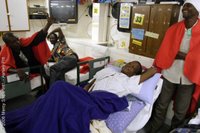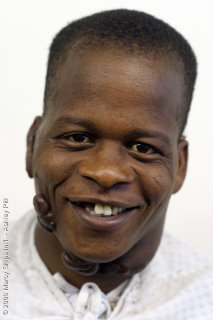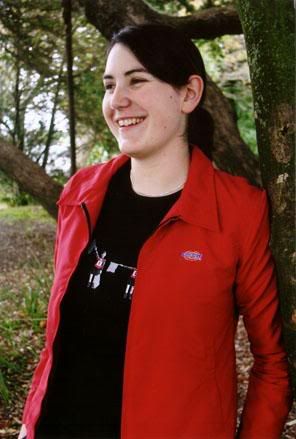Plastics African Style
Hello there, I hear through the grapevine that Bawa's story really touched some of your hearts last week, he certainly touched ours here on the ward! This week I thought I would share with you about my month of plastic surgery, and in particular a little dude called Ebenezer.

This is me and Ruth Van den Burg, out nurse advisor for plastics and maxillo-facial surgery. I was pulled of the ward to work alongside Ruth for three weeks, sharing my nursing knowledge about my favourite specialty! We were responsible for overseeing the care of the patients recieveing plastic surgery on board for the month that Dr Tertius Venter was on board the ship. My major job was to help Ruth with the dressing changes of all ot the patients.
Those of you who know this is what plastic surgical nurses do best - so I was in my element! Most of the patients had suffered burns at some stage, and the skin contracts as it heals, pulling tightly over joints. We use skin grafting to relase these contractures, and restore function to the patient as best we can.
There are some wonderful little kids whom I have unfortunately caused a bit of pain when changing dressings, but with the use of good pain killers, blowing bubbles, stickers and of course sedation, we still get along fine.

This little dude trying to touvh the ceiling is Ebenezer - here is a little of his story, written by our communications department.
When veteran South African plastic surgeon Tertius Venter arrived onboard the Mercy Ship, he found his exam room a bit crowded. There were 117 patients waiting dockside to see Dr. Venter his first day on the job. During a marathon screening session, July 25, Dr. Venter agreed to perform operations for 102 of these patients.
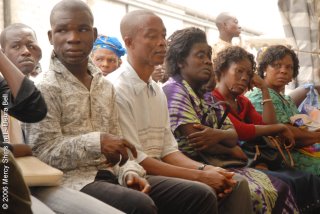
One of the first patients to receive surgery onboard the Mercy Ship is a badly burned little boy named Ebenezer Addo. Ebenezer was out playing with a friend one day when he stumbled into a field where charcoal was being made. The red-hot coals lay smoldering, hidden beneath a thin cover of topsoil.
The heat was so intense it quickly melted Ebenezer’s plastic sandals to his feet. Confused by the sudden pain, the boy reached down in a futile attempt to brush away the hurt and so his hands were also badly burned. The pain quickly drove Ebenezer to his knees and he crawled to safety, leaving his legs burned as well.
In the developed world, a child so badly injured would be immediately rushed to a specialized burns unit. But as in many poor countries, Ghana’s healthcare system is a pay-as-you-go service. Ebenezer was admitted to the hospital, but his burns received little attention because the family could not afford the cost. As a result the burned flesh contracted into rock-hard scar tissue, pulling Ebenezer’s hands and feet into misshapen claws.

“The thing about burns is, if you don’t treat them in good time they heal by what’s called ‘secondary tension’ or ‘contracture formation’,” Dr. Tertius explains. “This means the wound pulls closed by itself and that will pull your fingers closed in the palm of your hand or pull your shoulder up so that you can’t move it…a frozen position. “So we release that and treat that with skin grafts. It’s obviously very satisfying to do that, particularly with small children who come in with their hand in a little ball and he can’t open his hand and you can release that with skin grafts and they do very well. They get a lot of function back in those hands.
Ebenezer is still in recovery onboard, but the grafts are holding and his prognosis is good. The boy’s mother, Matilda, is so impressed with the Mercy Ship she’s decided the vessel and crew must be heaven sent. “I believe the nurses and doctors are little angels dropped from heaven just for my Ebenezer to get a chance at living again,” Matilda says. “My boy is alive, he smiles and I see the light in his eyes.”
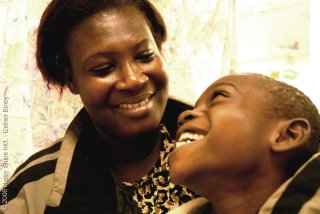
Dr. Venter is preparing to leave the Mercy Ship after treating roughly half of the 102 patients accepted for surgery. He’ll return in November to perform operations for the remaining patients. Interestingly, Dr Venter supports his frequent collaborations with Mercy Ships through the proceeds from a cosmetic surgery practice in Ireland. In just a few months’ time he can earn enough to spend the balance of the year treating the forgotten poor without charge.
Ebenezer is known by the ward nurses as spiderman! Until next time.....


